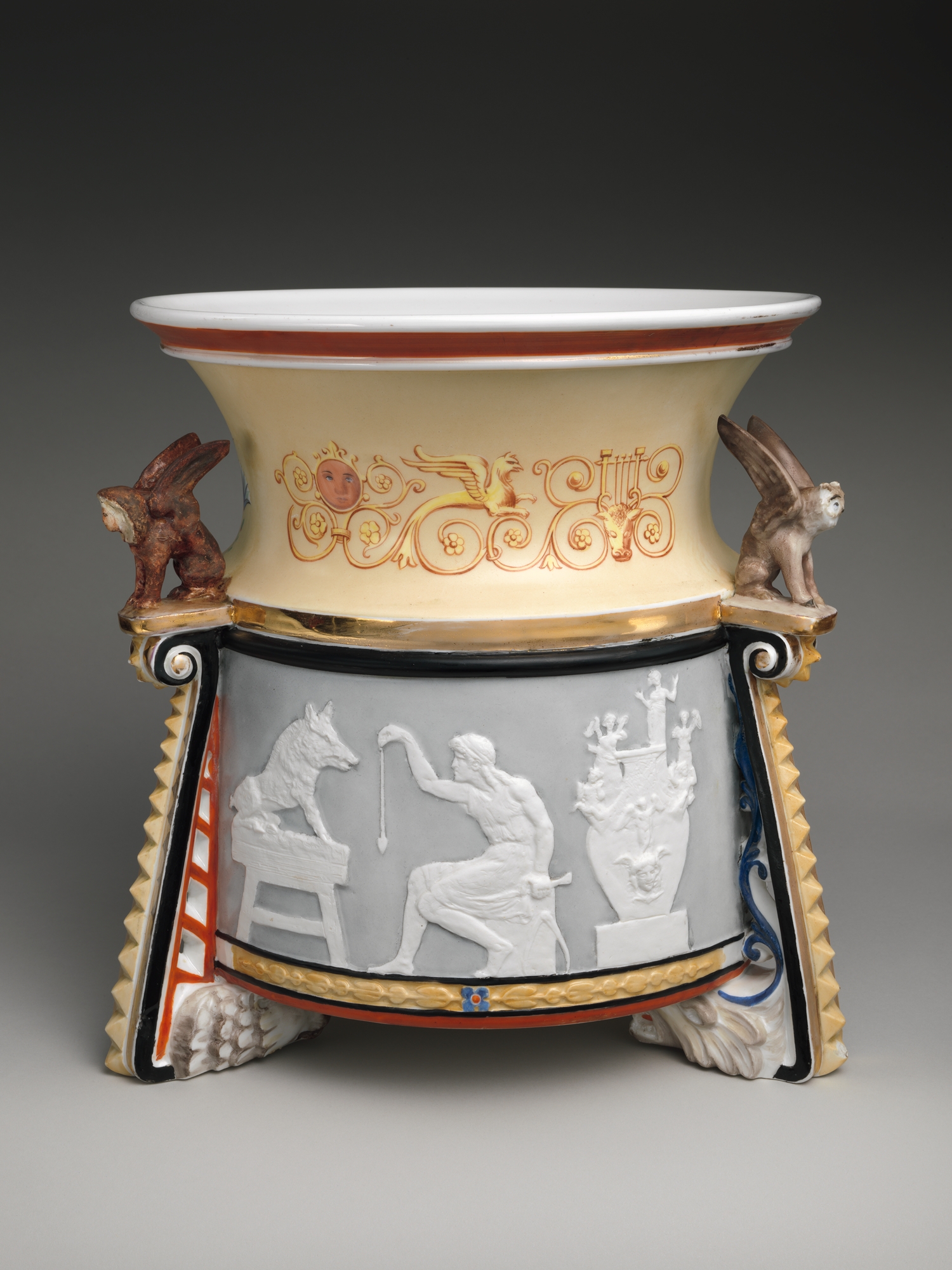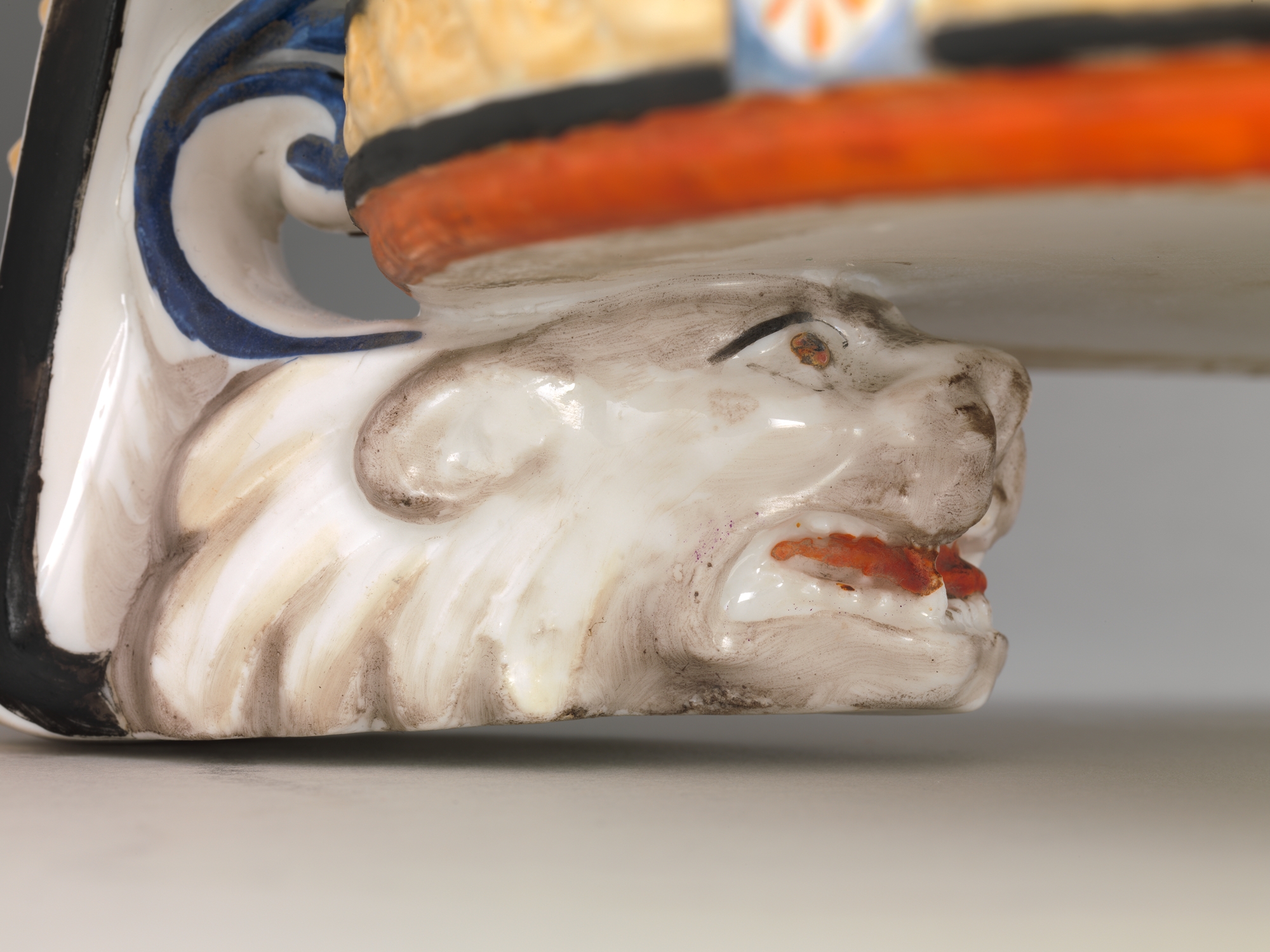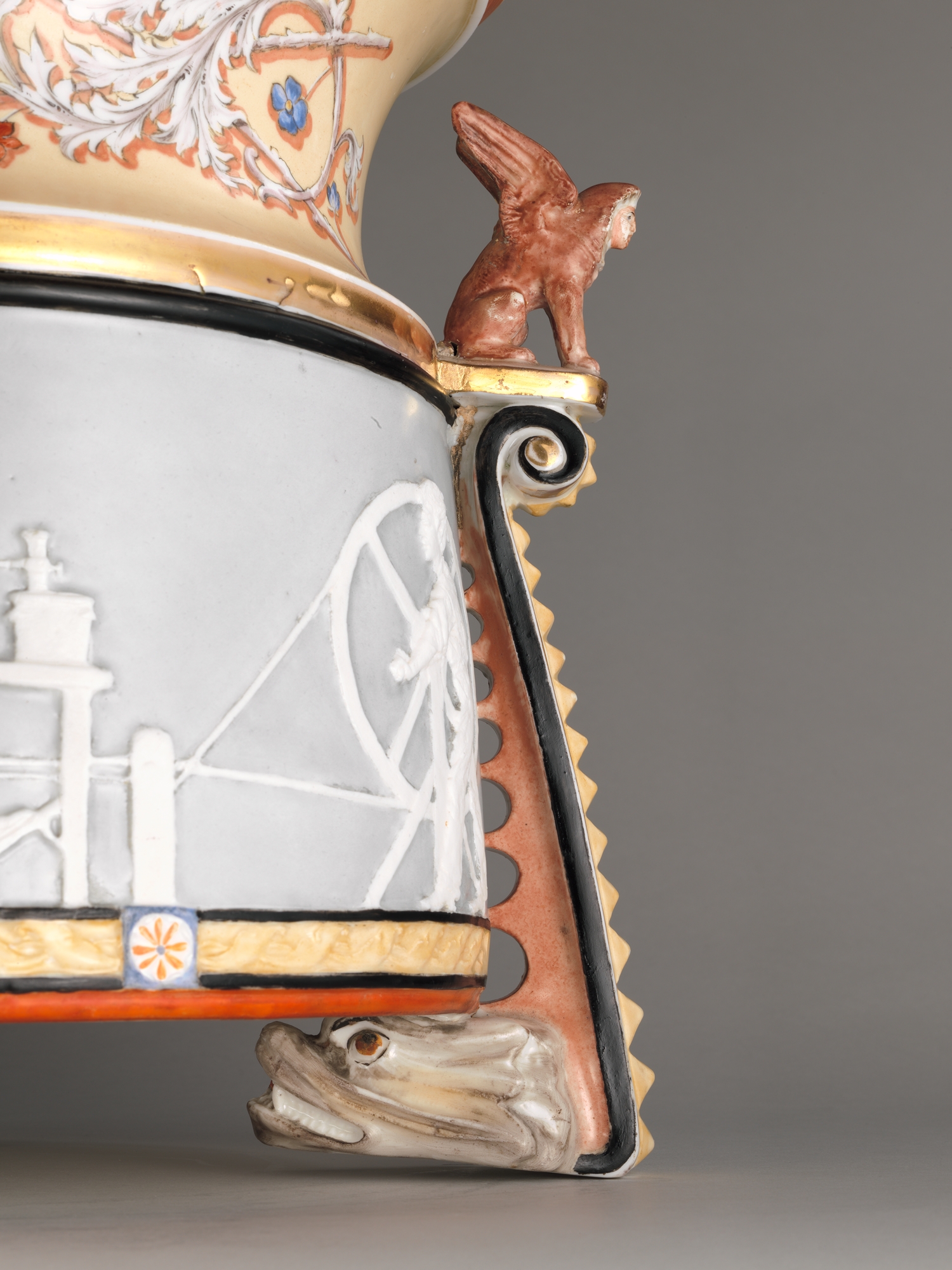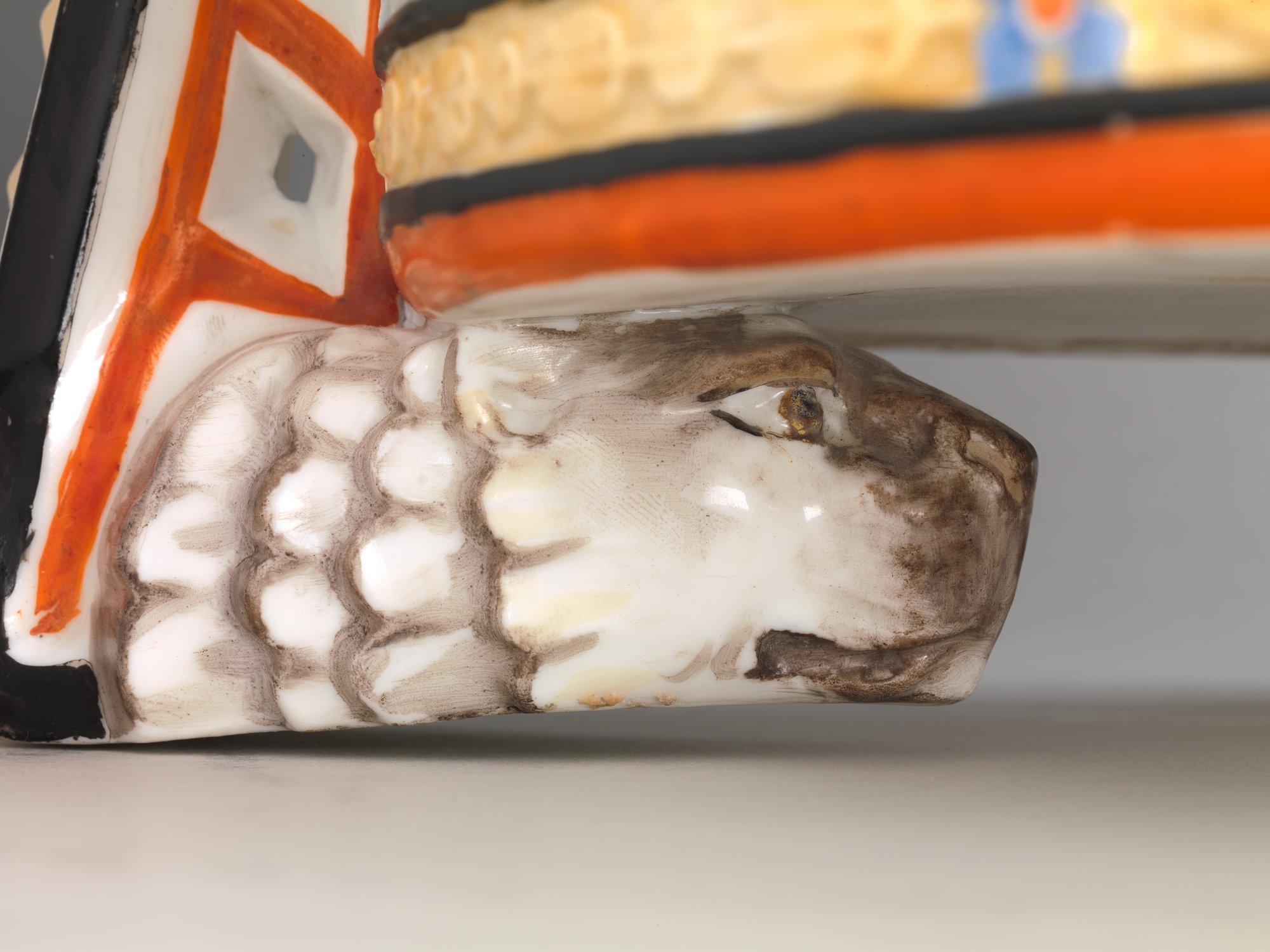Jardinière
Manufacturer Union Porcelain Works American
Designer Karl L. H. Müller American
Decorator Karl L. H. Müller American
The Philadelphia Centennial Exhibition in 1876 was a critical catalyst for the development of the American Art Pottery movement. In celebration of the country's hundred-year history, the enormous fair--for which preparations began in 1871--was designed to demonstrate America's technological and artistic progress in the years since gaining its independence. Ceramics played a critical role at the fair, providing an anthology of world ceramics, the repercussions of which were felt for decades. American ceramics manufacturers saw the Centennial Exhibition as an opportunity to elevate the aesthetic and technical quality of their wares and to seize a greater part of the burgeoning ceramics market from foreign rivals. For the first time, the fair would provide a major international showcase for their products; it signaled an increasing emphasis on the artistic aspects of ceramic production. Among the important American potteries exhibiting special wares at the Centennial was the Union Porcelain Works, located in the Greenpoint section of Brooklyn, New York, and at the time one of the country's largest porcelain manufactories. Until then its production had been limited to table services, utilitarian industrial wares, and hardware trimmings, such as doorknobs and keyhole covers. Owner Thomas Carl Smith enlisted the help of German-born sculptor Karl L. H. Müller to design some of the most extraordinary works destined for the expositions; the results were intended to be both artistic and "American" Resurrecting styles from the past, the firm sought to revitalize them in adventurous ways.
This large jardinière exhibits the admixture of techniques and themes central to Müller's designs for the fair. It is a fitting tribute to the history of pottery making in ancient and modern times. Around the lower half, scenes of potters from ancient Egypt and Greece--as well as from modern American industry--are modeled in low relief. The images in white against a bluish gray ground evoke Josiah Wedgwood's technique and honor the celebrated potter's role as the father of the modern ceramic industry. The upper half of the jardinière bears a painted frieze of motifs generally appropriate to the vignettes below. All of the patterns were borrowed directly from Augusta Racinet's influential Polychromatic Ornament, a French compendium of world ornament, published in its first English translation in 1873. The jardinière's shape, fanciful animal-topped buttress feet, and decorative scenes were employed by Müller in an even more ambitious designed, dubbed the Kéramos Vase, in honor of Henry Wadsworth Longfellow's poem "Kéramos," which first appeared in print in December 1877. From stanza to stanza the poem lauds ceramic accomplishments over time and across the world. The Ellison jardinière bears very similar scenes of pottery making.
This vase is from the Robert A. Ellison Jr. Collection of American art pottery donated to the Metropolitan Museum in 2017 and 2018. The works in the collection date from the mid-1870s through the 1950s. Together they comprise one of the most comprehensive and important assemblages of this material known.
Due to rights restrictions, this image cannot be enlarged, viewed at full screen, or downloaded.
This artwork is meant to be viewed from right to left. Scroll left to view more.















